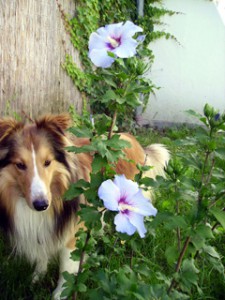In the garden and on the road lurk deadly poisons
 The beautiful season with flowers in the garden is bound to come. But what looks good can be a poisonous beauty and can be dangerous to dogs, cats and more. So it does not hurt to look around the garden with a scrutinizing look, to be astute, which potted plants can safely be bought and which flower bulbs can be buried for the next fall.
The beautiful season with flowers in the garden is bound to come. But what looks good can be a poisonous beauty and can be dangerous to dogs, cats and more. So it does not hurt to look around the garden with a scrutinizing look, to be astute, which potted plants can safely be bought and which flower bulbs can be buried for the next fall.
Some examples of poisonous plants and plants What they can cause:
- Agave leaves cause cramps, stomach and intestinal inflammation.
- Cyclamen causes all parts, but especially the tuber, to be poisonous (diarrhea Vomiting, convulsions, circulatory disorders, paralysis).
- Eating the Aaron staff or Calla may result in paralysis of the central nervous system until death.
- Holly berries may cause diarrhea and vomiting.
- Nibbling the cobbler's palm can cause fatal respiratory paralysis. The same applies to azalea leaves and flowers, all parts of the plant of autumn timeless plants, hyacinths, oleanders and lilies, as well as lupine seeds.
- Ivy leaves may cause diarrhea, vomiting and convulsions; it can also be fatal.
- Hydrangeas have the berries, leaves and bark in them: diarrhea and vomiting are at risk.
- The lily of the valley may be responsible for diarrhea, vomiting, Cardiac dysrhythmia and - like tulips - lethal circulatory failure.
- Narcissus bulbs can cause severe spasms and severe stomach/gut inflammation.
Tip: Always pay attention to what that means Animal in the garden or while walking under the nose or in the mouth. In case of doubt and in case of emergency, the four-legged friend must go immediately to the vet.
Alert signals in case of intoxicationIt can be life-saving to know the signals of poisoning. These include, for example:
- Frequent vomiting and increased salivation + cramps, foam on the mouth or blood in the urine and vomit
- arousal
- thirst
- rapid heartbeat
- circulatory collapse
- wide pupils
- breathing problems
- dysphagia
- paralysis
- Diarrhea
- Choking
- Unconsciousness
- Inflammation of the stomach, intestines, kidneys, skin and lips. Text/Photo: Marion Friedl